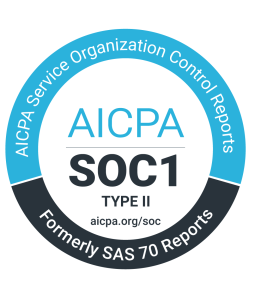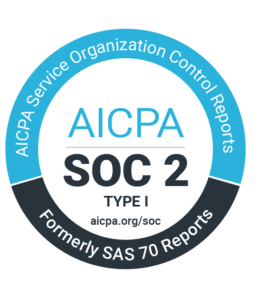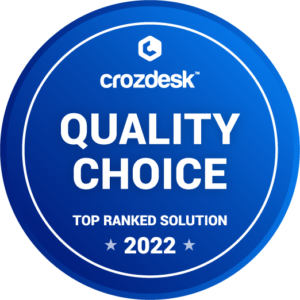Owning a cannabis dispensary can be a profitable endeavor. While the license application process, the physical build-out, and regulatory compliance all require patience and fortitude, there are good reasons to remain optimistic about owning a retail cannabis dispensary. According to the MJBiz Marijuana Business Factbook, U.S. regulated cannabis sales will exceed $15 billion in 2020, nearly a 40 percent increase from 2019. CNBC reported that primarily due to COVID-19, average retail cannabis sales rose an astounding 52 to 130 percent from January to March 2020. All of these aggregate numbers are a reason to celebrate, but what do the trendlines mean for dispensary profits? It’s safe to assume that dispensary sales numbers remain pointed in the right direction, but is there an average dispensary profit margin? To answer that question, a bit of history is illustrative.
MJBiz data revealed that in 2016, 18 percent of dispensaries reported they were very profitable; 41 percent had a modest profit; 29 percent broke even, 11 percent had some losses, and 1 percent had larger losses. A 2017 Statista.com analysis surmised that dispensaries averaged $3 million in annual revenue, with operating expenses averaging $1.2 million. In 2018, a study from ArcView and BDS revealed that “dispensaries have the ability to turn a 12 percent profit after taxes.” A 2020 Leafly.com study found that “…long-term legal retail cannabis profit margins will be around 15 percent.” This is consistent with additional research that indicates dispensary profit margins range between 12 and 15 percent. Fortunaly.com found that in 2020, medicinal dispensaries’ average profits ranged from $500,000 to $3,000,000, depending on geography, regulations, and taxes.
It’s important to remember that a smaller, so-called “mom and pop” dispensary in a less populated location will have different sales numbers and operating costs than a larger, urban dispensary. Planet 13, in Las Vegas, Nevada, is an extreme example. Covering more than 16,000 square feet of operating space, it’s the top-selling dispensary in ‘Vegas. Planet 13 reported 2019 revenue of $63.6 million, accounting for 9.1 percent of all Nevada cannabis dispensary revenue. It had a 2019 EBITDA of $9.9 million and reported Q1 2020 revenue of $16.6 million, on track to exceed its 2019 numbers.
Managing the Margins
At a basic level, there are common elements that drive net profits:
- Price per product
- Spend per transaction
- Total daily transactions
- Operating costs (inventory, rent, salaries, marketing, utilities, security, etc.)
- Taxes
- Operating efficiency (compliance, staff hours, inventory control, administration).
According to the data analytics firm New Frontier, consumers spent an average of $213 per month during the first three months of 2020, with record highs in April and May averaging $290 and $296, respectively. June’s sales numbers fell slightly to $282, but still up from early 2020. The data company Headset calculated that in 2020, on average, U.S. consumers spend between $25-$50 on each dispensary visit.
What is Rule 280E?
For cannabis businesses, Section 280E of the internal revenue code forbids cannabis businesses from deducting ordinary business expenses from gross income. This results in lower overall profits as businesses can’t take deductions that the IRS affords to most other companies. Rule 280E excludes tax write-offs for labor, rent, utilities, insurance, professional fees, etc. Harborside, the Oakland, California dispensary co-founded by industry legend Steve DeAngelo, has been fighting 280E’s cannabis exemptions since 2009. Unfortunately, in 2018 Harborside lost their case in U.S. Tax Court and is appealing the decision. However, until the federal government legalizes cannabis, most tax professionals and cannabis attorneys do not envision the IRS (or federal courts) ruling in dispensary owners’ favor.
Improving Dispensary Profit Margins
Every for-profit business owner’s goal is to generate sales, grow income, and make a profit. The simplest way to do so is to sell more products and reduce operating costs. For dispensary owners dealing with high taxes and burdensome reporting regulations, increasing operational efficiency can play a crucial role in improving profitability. Increasing operational efficiency is our core mission. It’s one reason why BLAZE partnered with Weedmaps and directly integrated Weedmaps Orders with a dispensary’s POS system. It’s perfect because the BLAZE Dispensary POS platform now offers cannabis retailers a single, seamless sign-on to update Weedmaps menus and receive customer orders. This improves the accuracy of the dispensary’s Weedmaps menu, leading to increased sales. The integration also enhances employee efficiency because it eliminates the need for manually updating the Weedmaps menu. The BLAZE POS platform also simplifies supply chain management and compliance reporting leading to better operating efficiency, which translates into higher profit margins.
While there are notable differences between independent dispensary owners and Multi-State Operators (MSO), the primary goals remain the same; increase daily sales transactions, improve each customer’s per transaction expenditure, and increase the store’s profit margins. The BLAZE software suite helps dispensary and delivery service owners operate more efficiently, and the adage still rings true; time is money. We’re here to help you succeed, and we can’t wait to get started!
As a relatively new industry, regulated cannabis sales are trending in the right direction both in the U.S. and internationally. This bodes well for everyone working in the cannabis sector. Yet finding ways to lower operating costs, increase sales, and improve dispensary profit margins are fundamental business practices that dispensary owners should never take for granted.
Let us know how we can help you. Contact our sales team, and let’s start a conversation about improving your dispensary’s profits. After all, there’s no margin for error.



